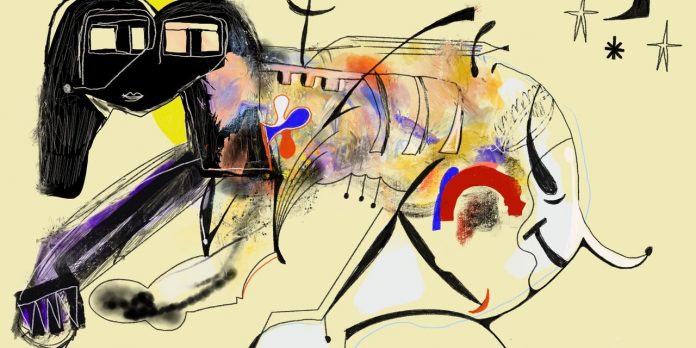Nonfungible tokens, or NFTs, may be sold at high-end public auctions and displayed at art fairs, yet most of the traditional art world remains wary of these digital assets.
A handful of NFT platforms are trying to change that through curatorial attention to the art that simulates structures familiar to traditional art-world participants.
LiveArt, a nearly year-old peer-to-peer online marketplace led by former art-world executives from Christie’s and Sotheby’s, is the most recent entrant with a new division called LiveArtX, which it launched in mid-March through a strategic partnership with EVG, a Hong Kong-based blockchain incubator and investor.
To reach traditional players, for instance, LiveArtX offers a “white label suite” that galleries and museums can use to create their own branded NFT marketplaces, and a mechanism to facilitate the minting of NFTs for artists.
The Institute of Contemporary Art Miami, or ICA Miami, will be the first to use this platform to offer NFTs by the artist Cory
Van Lew
as a fundraiser at its 365 Party. The NFTs will come out of a painting performance Van Lew will conduct on April 9 at the annual museum event, which is held to support free and open access to “cutting-edge contemporary art and ideas.” Three pairings of the physical paintings and NFTs, all featuring pandemic-related themes, will be offered for sale to support the museum, according to ICA Miami.
Other examples of art marketplaces include Hong Kong-based TRLab, also nearly a year old and co-founded by a current Christie’s executive, which offers curated works by traditional and digital artists, and SuperRare, which was founded four years ago as an art-curated platform for NFTs.
The art-based marketplaces “can act as an entry point to the cryptoworld—a way to bring the hesitant art world into this space using something that’s more familiar,” says
Anders Petterson,
founder and managing director of ArtTactic, a London-based data and research firm.
LiveArtX’s goal is to merge the worlds of traditional fine art and NFTs by catering to artists and galleries, but also by appealing to crypto-natives. These collectors have propelled the growth of NFTs into the mainstream largely through generative art projects of avatars such as Bored Apes and World of Women that collectors use as their personal profiles across social media.
“We found a way that seems to us would be of interest to art audiences crossing over into crypto and crypto audiences crossing into art,” says
Boris Pevzner,
co-founder and CEO of LiveArt.
Getting that balance right will be critical to attracting artists who typically work with painting and sculpture and other physical mediums, alongside the galleries that represent them and the collectors who collect their work.
“There’s a certain part of the [NFT] market that for the traditional art world has been quite frightening,” Petterson says. “A lot of artists and traditional art players are thinking: ‘How do we reconcile this model with a collecting model, [with] long-term nurturing of the artists and building up their reputation in a market that seems to be flipping and profit-making predominantly.”
The white-label suite will help by allowing artists to get assistance and exposure from their galleries, and to stay close to their collecting audience. The galleries and museums using the LiveArtX platform to create their own marketplaces also can tap into the wider LiveArtX community.
That’s a potentially huge audience. Last week, LiveArtX distributed 10,000 $ART tokens, a so-called utility token, that gives holders exclusive access to art, events, and a role in curating the platform. More than 780,000 signed up for a chance at getting the tokens, which were randomly generated. The token also gives holders membership in the LiveArt decentralized autonomous organization, or DAO, giving them a say in the site’s governance.
The first group of NFTs dropped on LiveArtX were by the artist
Gianni Arone
who goes by the tag LOVEBEING. Arone’s difficult life story was the subject of an HBO documentary, and his art, via LOVEBEING “is more of a way to create an amalgamation of references—a system of expression—than it is an alter-ego or pseudonym,” according to LiveArt.
Any collector who buys three LOVEBEING character NFTs also receives a unique physical print.
While the token was created to serve the NFT platform,
Marisa Kayyem,
the former director of education at Christie’s who is now LiveArt’s chief curator and head of its crypto efforts, says eventually the token’s use will permeate the LiveArt ecosystem of physical and digital sales.
“The potential for it is unlimited within the art world,” Kayyem says.
While Petterson understands the traditional art world’s hesitancy in approaching NFTs, he says these digital assets provide a way for artists, galleries, and other conventional participants to expand their audiences. He views this crypto-based world a bit like social media, which many avoided at the expense of creating a larger audience for their work.
“We don’t know where this is going, but sitting on the fence doing nothing means someone else can step in and define the rules and define the criteria for what might be perceived as quality in the future,” Petterson says.
Credit: Source link





















 Bitcoin
Bitcoin  Ethereum
Ethereum  Tether
Tether  Solana
Solana  USDC
USDC  Lido Staked Ether
Lido Staked Ether  XRP
XRP  Dogecoin
Dogecoin  Toncoin
Toncoin  Cardano
Cardano  Shiba Inu
Shiba Inu  Avalanche
Avalanche  TRON
TRON  Wrapped Bitcoin
Wrapped Bitcoin  Bitcoin Cash
Bitcoin Cash  Polkadot
Polkadot  Chainlink
Chainlink  NEAR Protocol
NEAR Protocol  Litecoin
Litecoin  Polygon
Polygon  Internet Computer
Internet Computer  Uniswap
Uniswap  LEO Token
LEO Token  Dai
Dai  First Digital USD
First Digital USD  Ethereum Classic
Ethereum Classic  Hedera
Hedera  Aptos
Aptos  Stacks
Stacks  Mantle
Mantle  Stellar
Stellar  Cronos
Cronos  Filecoin
Filecoin  Cosmos Hub
Cosmos Hub  OKB
OKB  Render
Render  Pepe
Pepe  Renzo Restaked ETH
Renzo Restaked ETH  Immutable
Immutable  XT.com
XT.com  Arbitrum
Arbitrum  dogwifhat
dogwifhat  Bittensor
Bittensor  Maker
Maker  Wrapped eETH
Wrapped eETH  The Graph
The Graph  Optimism
Optimism 
